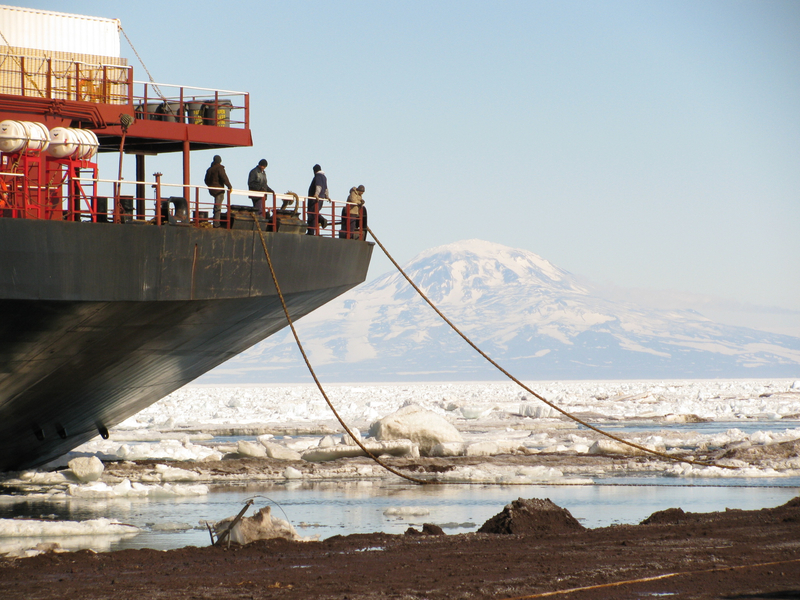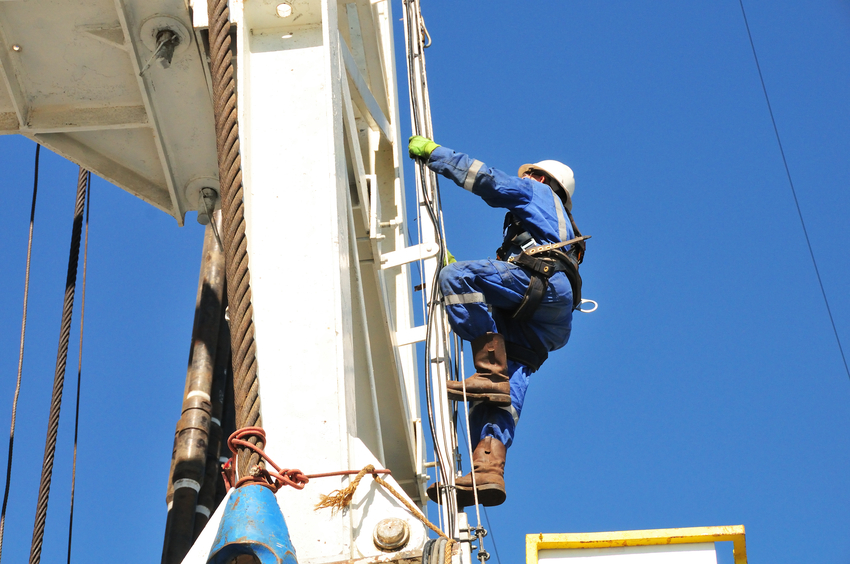It's dark hundreds of feet below the surface of the water — pitch black, in fact. So dark that even the most technologically advanced underwater lighting isn't much of a help to divers struggling to see.
So rather than using their eyes to work, deep sea divers often use their other senses to complete a job — in many cases, contorting their bodies in uncomfortable positions deep below the sea to reach a worksite. At the same time, these divers must maintain their composure while at work in the darkness. A bump in the night, so to speak, cannot send them bolting for the surface. A direct return to the surface from such depths may lead to the bends, other injuries — or even death.
While many professions pose dangers, marine industry jobs rank among some of the riskiest. These jobs, for which specialized agents and brokers are regularly writing policies and carefully trained adjusters are responding to claims by land or sea, include many work-related risks, some of which can be avoided.
|Dangerous Job #1: Divers
While many may visualize divers as treasure hunters, rummaging through old shipwrecks at the bottom of ocean, these construction workers of the sea are actually jetting pipelines, welding ships, inspecting oil rigs, assisting the building of bridges, tunnels and much more. They are well-trained, educated and well paid — in some cases roughly $200,000 annually. They work in the water at depths of two feet to 950 feet.
Whether working on rivers, lakes or in the ocean, these divers face a slew of risks from strong riptides to water traffic, to floating logs or other debris. Some deep sea divers, called saturation divers, can live in a diving bell for 30-40 days at a time before they return to the surface. Then, they must come up slowly over a five to seven-day period, decompressing during that time. Imagine the risks here — if a diver needs to return to the surface for a medical reason or other issue, he or she cannot safely do so for almost a week.
Tommy Domingue, a New Orleans-based workers' compensation claims manager with York Risk Services Group, has seen it all. One tragic claims story he shared involved a shallow water diver working on the exterior of a tug boat. A rope was tangled in the tug's propeller engine and this diver was tasked with fixing it. He did everything right. The diver was in only eight feet of water. He had his tank, tether and a tender to look out for him.

He dove under the tug to unfoul the tangled rope and never resurfaced. Another vessel passed during this time, but little wake was created as they saw the diver in the water. After investigating the claim, it was never determined exactly how the diver died, but adjusters speculated that he was possibly knocked out by debris created by the wake of that passing vessel, small though it was.
It demonstrates that even the most experienced claims professionals can often struggle to understand the types of accidents that can occur in dangerous occupations.
Accidents like this will happen, but safety and preparation are key to reducing accidents and protecting divers. While diving is considered by many to be a dangerous profession, they have excellent safety guidelines. The U.S. GoM Diving Safety Work Group, which is a collaboration of oil and gas contractors and commercial diving companies among others, offers detailed safety guidelines related to underwater burning operations, emergency response, underwater excavation operations, underwater evacuation and hyperbaric evacuation.
 Deckhands usually have less training and experience than other workers, and their claims tend to involve a variety of injuries. (Photo: iStock)
Deckhands usually have less training and experience than other workers, and their claims tend to involve a variety of injuries. (Photo: iStock)
Dangerous Job #2: Deckhands
Responsible for much more than just swabbing the deck, these crewmen wear many hats. Unlike divers, deckhands are typically much less experienced — often with just a few months or years under their belts — and this inexperience is one reason deckhands can be involved in some unpleasant incidents.
Traditionally, deckhands are responsible for general maintenance, including the hull, decks and mooring as well as for handling cargo and more. With such responsibilities on seas that often reach five or six feet or higher, working on the deck in any fashion can be dangerous.
Aside from slipping on the deck, falling overboard in rough water or off of an icy deck, deckhands also run the danger or losing fingers or limbs between cargo loads, or getting caught between the vessel and the dock.
While adjusters don't see as many fatalities related to deckhand claims, they do see myriad injuries. To mitigate these risks, deckhands are encouraged to review safety guidelines. These guidelines suggest wearing steel toe shoes, never walking or standing under a cargo load, using tag lines to guide equipment, and being alert for pinch points, among other things.
Organizations like the American Waterways Operators offer safety guidelines for deckhands and other crew members. In fact, in partnership with the U.S. Coast Guard since 1995, AWO offers analysis and recommendations aimed at improving crew safety and reducing injuries and fatalities.
 Working on an oil rig usually involves placing employees 60 to 80 feet above the deck as they are transferred from the ship to the rig over choppy seas. (Photo: iStock)
Working on an oil rig usually involves placing employees 60 to 80 feet above the deck as they are transferred from the ship to the rig over choppy seas. (Photo: iStock)
Dangerous Job #3: Oil Rig Workers
It's no surprise that those who work on oil rigs have dangerous jobs. One of the riskiest aspects is one most people have probably never considered — the offshore personnel basket transfer.
To move workers from a vessel to an oil rig platform, oil rigs commonly use an offshore personnel basket. Essentially, oil rig employees climb onto a basket-like structure roughly four-feet-wide that is hooked to a frame. The basket is typically flat and circular at the bottom with netting in the middle. The workers stand on a floatation ring around the netting without harnesses or ropes, and hold on while they are hoisted 60 to 80 feet into the air over choppy seas from their vessel to the rig platform or vice versa.
According to Domingue, there have been cases where the basket is quickly jolted back to the deck due to a large swell or wave, causing workers to fall off. Spinal injuries or death can result from a fall to the deck or to the water. Disembarking from the basket is also dangerous as the rider must step off the basket and onto the vessel or rig without slipping or falling.
Organizations like the International Marine Contractors Association offer guidelines and safety tips for personnel basket transfers that examine risk levels, training, environmental conditions and equipment. Among other things, the guidelines recommend transferees wear safety helmets, boots, and life jackets with lights and whistles. Some individuals might be assessed for extreme exhaustion before boarding a transfer basket.
|Righting the ship
With so many dangerous jobs in the marine industry, much is being done to keep divers, deckhands, oil rig workers and others as safe as possible. Aside from the guidelines offered by the various trade associations and organizations listed here, risk managers, carriers and adjusters are doing more to understand the dangers in an effort to mitigate them.
The first line of defense for risk management in the marine industry is hiring practices. For dangerous jobs like these, employers should hire the most experienced personnel available. They should also make sure their safety procedures are not only up-to-date, but that employees are familiar with them and drilled regularly.
Employing a safety officer is also a smart idea for vessel and oil rig operators; someone who regularly assesses risk. Excellent training opportunities including simulator experiences are also invaluable. Companies like oil and gas supplier Baker Hughes offer training courses, online and classroom, including simulations where appropriate.
Marine jobs are fascinating and critical to the nation's economy. While it may not be a revenue generator, safety must be a top priority for those who work in the marine industry to keep the employees who perform these dangerous tasks as safe as possible.
Damon Vaughan is senior vice president at Tidal Marine, a commercial marine insurance program administered by Venture Insurance Programs.
Want to continue reading?
Become a Free PropertyCasualty360 Digital Reader
Your access to unlimited PropertyCasualty360 content isn’t changing.
Once you are an ALM digital member, you’ll receive:
- Breaking insurance news and analysis, on-site and via our newsletters and custom alerts
- Weekly Insurance Speak podcast featuring exclusive interviews with industry leaders
- Educational webcasts, white papers, and ebooks from industry thought leaders
- Critical converage of the employee benefits and financial advisory markets on our other ALM sites, BenefitsPRO and ThinkAdvisor
Already have an account? Sign In Now
© 2024 ALM Global, LLC, All Rights Reserved. Request academic re-use from www.copyright.com. All other uses, submit a request to [email protected]. For more information visit Asset & Logo Licensing.








